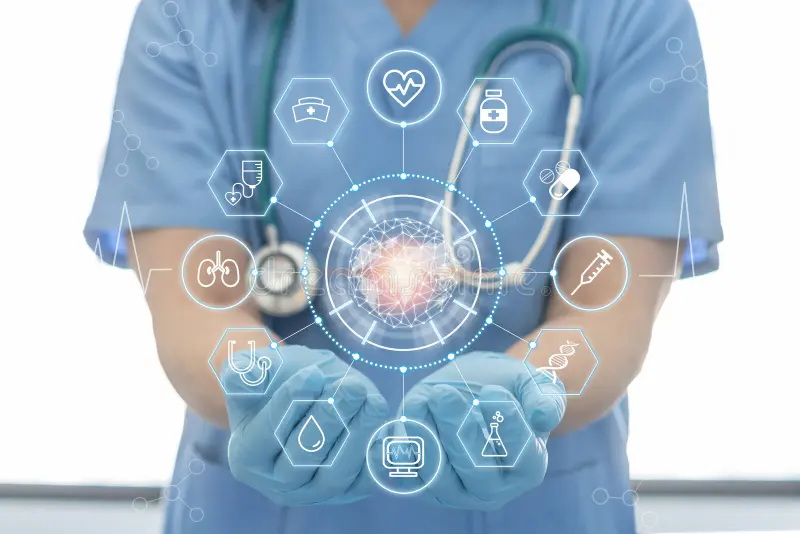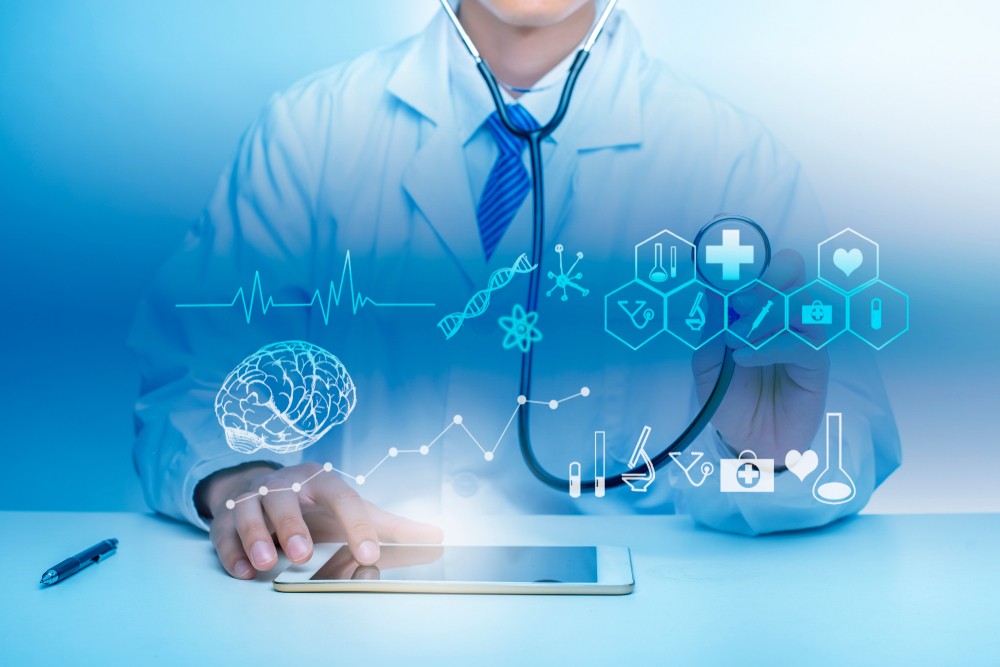Health innovations are driving major headways in healthcare, making medications more productive, open, and exact. These innovations are revolutionizing persistent care, diagnostics, and restorative workflows. In this article, we will examine the 5 key health advances forming the future of healthcare.
1. Counterfeit Insights (AI) and Machine Learning
Artificial Insights (AI) is one of the most impactful wellbeing innovations nowadays. By leveraging calculations and information, AI helps in diagnostics, treatment arranging, and regulatory errands, progressing generally healthcare conveyance.
Applications of AI in Wellbeing
- Restorative Imaging and Diagnostics: AI-powered instruments analyze X-rays, CT looks, and MRIs to distinguish conditions like cancers and breaks speedier than conventional strategies.
- Prescient Analytics: AI predicts illness episodes, recognizes chance variables, and prescribes preventive medications.
- Personalized Medication: AI makes a difference make custom-made treatment plans by analyzing understanding information.
- Virtual Associates: AI-driven chatbots help with planning arrangements, replying persistent questions, and directing fundamental care.
AI essentially progresses productivity, decreases mistakes, and upgrades understanding care results.
2. Telemedicine and Inaccessible Observing
Telemedicine has changed how patients and specialists associated by permitting virtual meetings through innovation. It guarantees get to to healthcare, particularly for patients in farther or underserved locales.
Benefits of Telemedicine
- Helpful Interviews: Patients can interface with specialists through video calls, sparing travel time and costs.
- Inaccessible Quiet Checking: Gadgets like blood weight screens and beat oximeters collect real-time quiet information for specialists.
- Inveterate Infection Administration: Telemedicine makes a difference screen inveterate infections like diabetes, heart conditions, and hypertension routinely.
Telemedicine has gotten to be a basic instrument for progressing openness and understanding comfort whereas diminishing healthcare costs.
3. Wearable Wellbeing Gadgets
Wearable wellbeing gadgets permit people to screen their wellbeing measurements and give real-time information to healthcare suppliers. Prepared with sensors, these contraptions enable clients to take proactive steps toward wellness.
Cases of Wearable Gadgets
- Wellness Trackers: Gadgets like Fitbit and Apple Observe screen steps, calories, heart rate, and rest designs.
- ECG and Blood Weight Screens: Progressed wearables distinguish sporadic heart rhythms or tall blood weight early.
- Nonstop Glucose Screens (CGMs): These gadgets offer assistance diabetic patients screen blood sugar levels ceaselessly.
Wearables energize more beneficial ways of life whereas permitting early location of restorative conditions, guaranteeing convenient mediations.
4. Mechanical technology in Healthcare
Robotic innovation is rethinking accuracy and effectiveness in surgeries, restoration, and understanding care. Mechanical technology minimizes blunders, diminishes recuperation time, and improves healthcare results.
Applications of Mechanical autonomy
- Robotic-Assisted Surgeries: Robots like the da Vinci Surgical Framework empower negligibly obtrusive strategies with tall precision and control.
- Restoration Robots: Automated exoskeletons help patients in recapturing development after loss of motion or damage.
- Healing center Robotization: Robots computerize errands like transporting supplies, cleaning rooms, and conveying medicines, progressing productivity.
Robotics improves accuracy and makes a difference specialists perform complex strategies with negligible chance, making strides understanding recuperation and care.
5. 3D Printing in Pharmaceutical
3D printing is a groundbreaking innovation in healthcare that permits for the creation of customized therapeutic instruments, prosthetics, inserts, and indeed bioprinted tissues.
Key Employments of 3D Printing
- Custom Prosthetics and Inserts: 3D printing makes patient-specific appendages, dental inserts, and surgical apparatuses with correct exactness.
- Surgical Arranging: Specialists utilize 3D-printed models to arrange complex strategies and decrease mistakes amid operations.
- Bioprinting Tissues: Inquire about in bioprinting points to make living tissues, skin unites, and organs, tending to the organ benefactor deficiency.
3D printing decreases generation costs, guarantees customization, and moves forward surgical results.
Conclusion
The 5 key wellbeing technologies—Artificial Insights, Telemedicine, Wearable Gadgets, Mechanical technology, and 3D Printing—are changing healthcare conveyance around the world. These developments empower speedier diagnostics, upgrade exactness, and enable patients to take control of their wellbeing.
As these innovations proceed to advance, they will bridge crevices in healthcare, make strides availability, and provide life-changing arrangements to patients all inclusive. The future of healthcare depends on tackling these advances to give more astute, quicker, and more personalized care.





